In a newly published study, scientists from Yale University directly visualize how HIV and related retroviruses disseminate in secondary lymphoid tissues of living mice.
How retroviruses like HIV spread in their hosts had been unknown — until a Yale team devised a way to watch it actually happen in a living organism. The elaborate and sometimes surprising steps the virus takes to reach and spread in the lymph nodes of a mouse have been captured on videos and described in the October 2 issue of the journal Science.
“It’s all very different than what people thought,” said Walther Mothes, associate professor of microbial pathogenesis and co-senior author of the paper.
Tracking fluorescently stained viruses in mice, the Yale team led by Mothes and co-senior author Priti Kumar, assistant professor of medicine and microbial pathogenesis, used sophisticated imaging technology to capture the action as the viral particles bind to macrophages via a sticky protein that is located at the capsule of the lymph node (in blue).
But that is only the first step of the journey. The captured viral particles open to a rare type of B-cell, seen in red in the accompanying movie. The virus particles then attach themselves to the tail of these B-cells and are dragged into the interior of the lymph node. In one to two days, these B-cells establish stable connections with tissue, enabling full transmission of the virus.
The insights provided by the videos identify a potential way to prevent HIV from infecting surrounding tissue. If researchers could develop a way to block the action of the sticky protein the virus uses to bind to macrophages, then the virus’ transmission could be halted, Mothes suggested.
“The direct study of viral pathogenesis within living animals should reveal more surprises in the future,” Mothes said.
Postdoctoral researcher Xaver Sewald is the lead author of the paper. Pamela Bjorkman of Cal Tech also contributed to the research, which was funded by the National Institutes of Health, The Leopoldina German National Academy of Sciences, and the China Scholarships Council.
Reference: “Retroviruses use CD169-mediated trans-infection of permissive lymphocytes to establish infection” by Xaver Sewald, Mark S. Ladinsky, Pradeep D. Uchil, Jagadish Beloor, Ruoxi Pi, Christin Herrmann, Nasim Motamedi, Thomas T. Murooka, Michael A. Brehm, Dale L. Greiner, Leonard D. Shultz, Thorsten R. Mempel, Pamela J. Bjorkman, Priti Kumar and Walther Mothes, 1 October 2015, Science.
DOI: 10.1126/science.aab2749

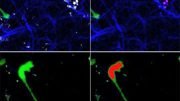
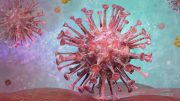
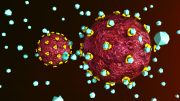

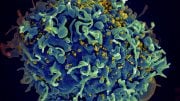

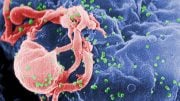
You can draw an analogue from metastasis of carcinogenic cells through
adjoining pluripotent cells intended to be transported to other organs where they instead of doing their job of building the tissues concerned of the relevant organs does corrupt them to build cancer cells. Here HIV virus is piggybacking on macrophages of the the body which are intended to destroy the bacteria entering the body, to facilitate as transporter of virus to different organs of the body. Thank You.